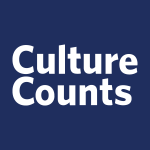We’ve dug into our Culture Counts data set to identify how people hear about the events our clients put on. Here are some of our findings.
Available options
A commonly used custom question in Culture Counts surveys is “How did you find out about [name awesome event here]?”. This will often be a multiple-choice question with some options identified for selection. The most commonly provided options are shown the chart below:

How do people respond?
Ok, so those are the options respondents are commonly presented with (remember, this is typically in the form of a multiple-choice question). Looking at responses in the aggregate we can see what the most common responses are for why people have attended the particular event:

Breaking these down
Into different event art forms
We can dig a bit deeper by categorising the events into different art forms and seeing if there are differences in how people hear about them. Each of the following charts shows the relative proportion of responses obtained for the ‘Marketing’ type question used in surveys for different art forms.
Let’s start by looking at Opera and Dance events.

How about if we look at Theatre and Art as event categories?

For the Art category, we see for the first time that people might just drop in to the event when they are Passing by. This makes sense as a lot of art events might be free entry or not ticketed, and so you don’t really need to plan ahead (unlike Theatre, for example). We also see a high proportion of friends and family of the artists attending (Friend or family of a participating artist), and perhaps even the artists attending in support of colleagues (I am a participating artist), indicating a supportive and dynamic artistic community.
Lastly, you might have noticed that the Other category seems to get a lot of responses. We looked into this and when asked to specify, the most typical responses were categories like Friends and/or family or Passing by, i.e. categories that we already have in the aggregate but just didn’t happen to be provided for that particular event. One exception was for Dance events, where a new category in the vein of My dance teacher told me about it started to appear.







